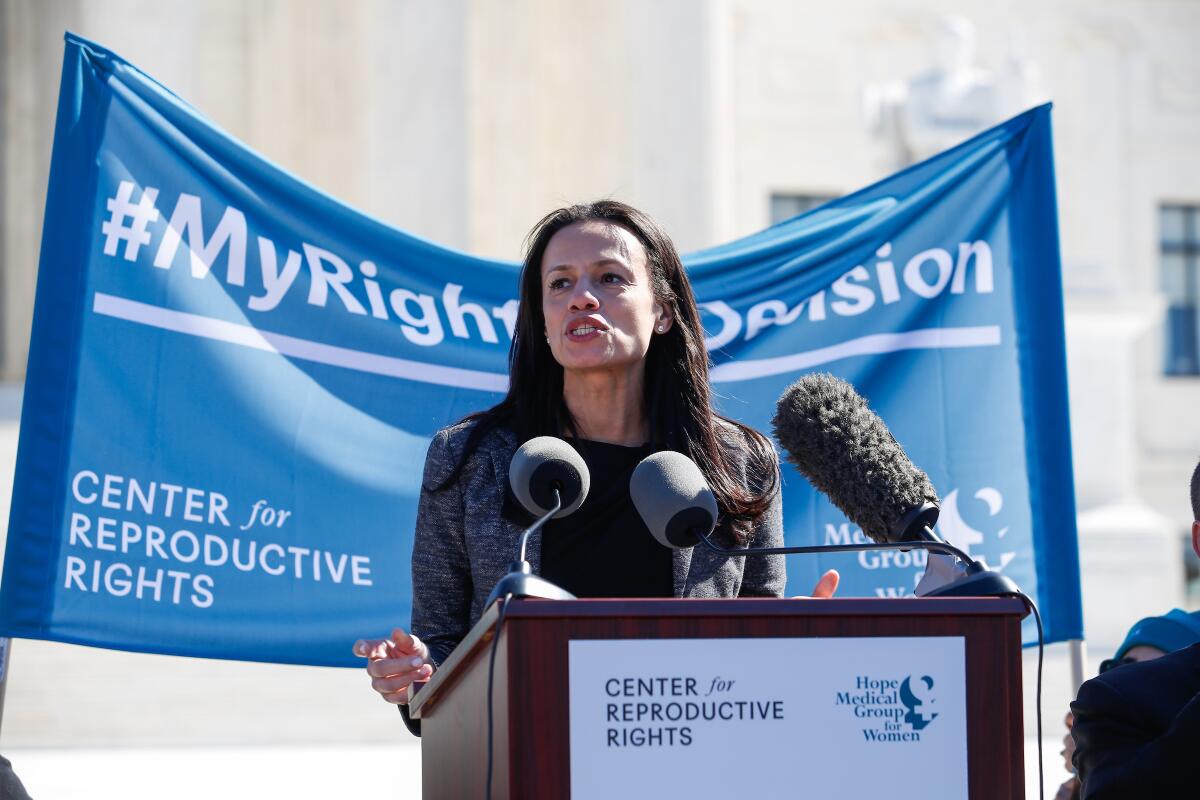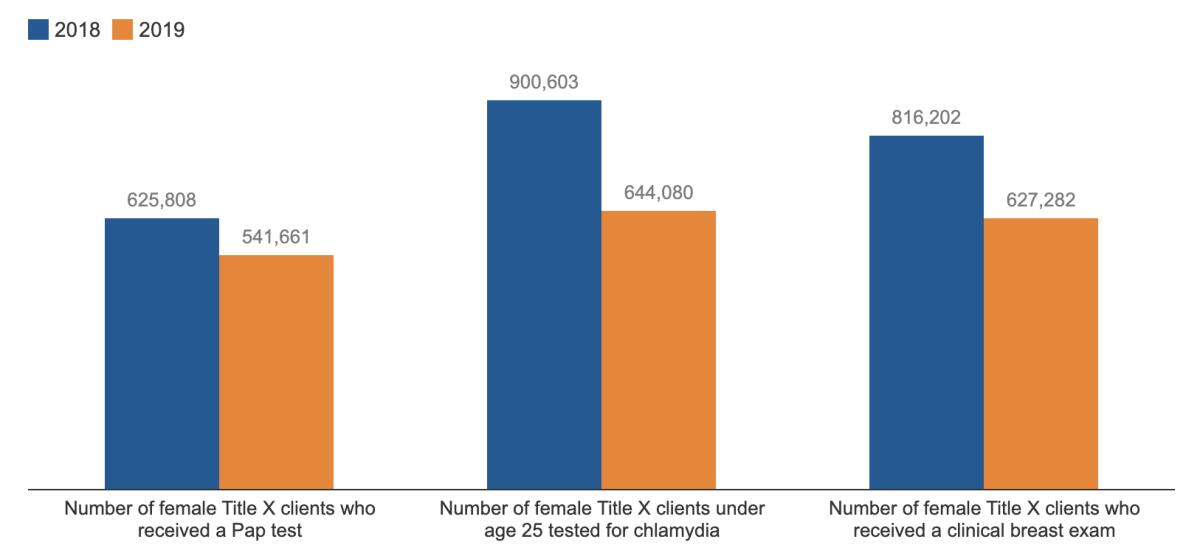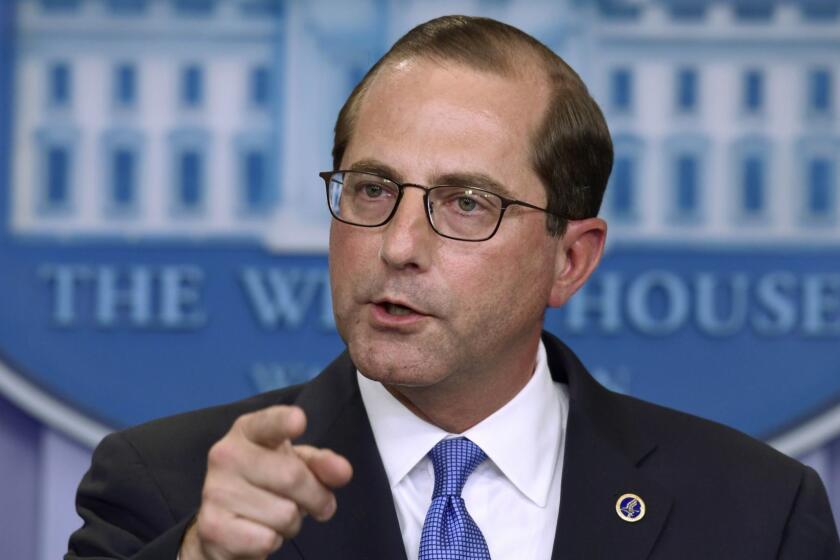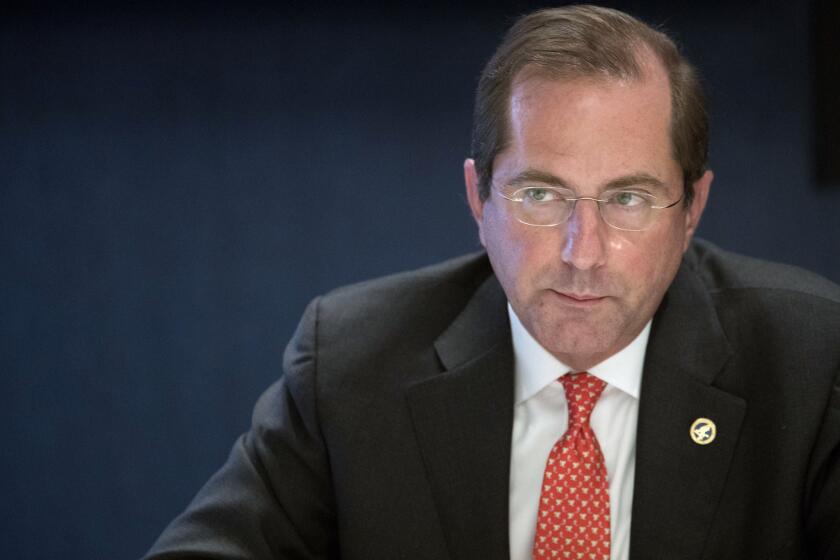Column: A Trump-era attack on Planned Parenthood and women’s health comes to an end

The “gag rule” is over.
The centerpiece of the Trump administration’s attack on women’s reproductive health was its 2019 rule banning abortion referrals, requiring coercive anti-abortion counseling for pregnant patients and imposing stringent financial standards for clinics offering federally funded reproductive healthcare.
This policy, known by critics as the gag rule, achieved the goal its drafters plainly intended: The capacity for delivering healthcare to low-income women under the half-century-old Title X federal program was slashed nearly in half, reducing contraception options for as many as 1.6 million patients.
The majority would return us to an older world, one in which a government bureaucrat could restrict a medical professional from informing a patient of the full range of healthcare options available to her .... Patients are steered toward childbirth at every turn.
— Federal Appellate Judge Richard A. Paez, dissenting from a ruling upholding a Trump gag rule on women’s health providers
The rule struck especially hard at Planned Parenthood, which served more than 40% of such patients nationwide and had become the target of right-wing anti-abortion activists. In the face of a federal mandate to deliver substandard healthcare, Planned Parenthood withdrew entirely from Title X.
The organization tried to mitigate the harm by helping patients access insurance and stretch out their payments; a few states provided emergency funding and some independent clinics tried to take on the case load.
But these steps were unsustainable. The rule “decimated patients’ access to affordable birth control” and services such as screening for cancer and sexually transmitted diseases, especially for “people of color and people with low incomes,” says Planned Parenthood Chief Executive Alexis McGill Johnson.
Now the Biden administration is consigning the gag rule to the trash heap. This week, the administration started the process of rolling back the Title X rules to where they were in 2000, before Trump.
Contraception policy may not be the biggest target of the anti-science right wing — climate change and evolution probably rank higher — but it’s the field in which scientific disinformation has the most immediate consequences for public health.
The Biden administration’s rule proposal is blunt about the impact of the gag rule on women’s and family health: In a nutshell, it’s been devastating.
According to the Department of Health and Human Services, the lights effectively went out of family planning and women’s health clinics coast to coast. More than 1,000 service sites, or about 25% of the total, left the Title X program.
That left six states (Hawaii, Maine, Oregon, Utah, Vermont and Washington) without Title X services at all, and very limited accessibility in six others (Alaska, Connecticut, Massachusetts, Minnesota, New Hampshire and New York).
In California, which had hosted the largest Title X program in the country, 36% of the sites closed, leaving more than 700,000 patients without access to federally funded care.
Get the latest from Michael Hiltzik
Commentary on economics and more from a Pulitzer Prize winner.
You may occasionally receive promotional content from the Los Angeles Times.
Nationwide, the caseload declined by 844,083 patients, or more than 20%. Low-income, minority and uninsured patients suffered the most, exacerbating healthcare inequities that were already punishing for those groups.
HHS calculates that in 2019, the year of the Trump rule, 225,688 fewer clients received oral contraceptives than in 2018, 49,800 fewer received hormonal implants and 86,000 fewer got IUDs. Some 300,000 fewer Pap tests and breast exams were performed and 276,000 fewer HIV tests. Some 151,000 fewer teens received family planning services.
The Trump rule may have led to as many as 181,477 unintended pregnancies.

What’s most important about this toll is that it had nothing to do with any judgment about public health needs. It was 100% about ideology, specifically anti-abortion ideology.
Trump had stocked his HHS with purveyors of conclusively debunked claptrap about contraception, abortion, pregnancy and women’s reproductive health generally.
The people vested with making policy at Trump’s HHS included Charmaine Yoest, the former head of Americans United for Life, a prominent anti-abortion group that promoted the false claim that abortion increases a woman’s chances of having breast cancer; Teresa Manning, a former lobbyist for the National Right to Life Committee who once told an NPR interviewer, “Of course, contraception doesn’t work”; and Valerie Huber, the president of Ascend, a Washington group that advocates for abstinence-only sex education.
The Trump minions tried to dress up the gag rule as a response to the possibility that reproductive health clinics were quietly diverting Title X funds to abortion services or referrals, but that was a lie.
Neither the Government Accountability Office nor any of the oversight agencies that regularly audited providers ever found any diversions of federal funds that would justify the stricter provisions of the Trump rule.
Supporters of women’s reproductive health programs got a bit of good news this week, when federal judges in Seattle and Washington, D.C., blocked the Trump administration’s effort to cut off all funding for teen pregnancy programs — adding up to four judges making virtually identical rulings in five cases over the last few weeks.
Even if it were true that clinics could use Title X funds to cover permitted services and thus use nonfederal funds for abortions or abortion referrals, that wasn’t a legitimate rationale for the rule. As the HHS proposal states, federal courts have consistently held that “governments cannot restrict access to funds for one activity simply because it may ‘free up’ funds for another.”
No, the Trump rule was simply an act of vandalism. To be fair, it was the product of a long and detestable Republican tradition that turned birth control into a political football.
At the time of its enactment in 1970, Title X included a ban on using federal funds granted under the program for abortion. Rules issued under Republicans Richard Nixon and Gerald Ford prohibited providers from promoting or encouraging abortion in any way and mandated that Title X services be functionally separated from abortion services.
Democrat Jimmy Carter allowed grantees to provide counseling on abortion upon patients’ request. But Republican Ronald Reagan reversed course, and in 1988 issued the first gag rule of Title X, prohibiting any discussion of or referrals for abortions.
As HHS reports, the 1988 rule required providers to “maintain strict physical and financial separation between Title X projects and abortion related activities.” Reagan also barred “lobbying, education, dues-paying or any other activities which could be interpreted to encourage or promote abortion,” according to HHS.
A torrent of lawsuits challenged the rule, but it was upheld by the Supreme Court in 1991. Following that decision, however, the Reagan rule was in effect for only one month in 1992 before it was rescinded by the new president, Bill Clinton, immediately upon his inauguration in 1993.
That’s where things stood for 25 years. Then came Trump.
Trump’s HHS not only reinstated the 1988 gag rule, but added a few more roadblocks. It added new reporting and record-keeping requirements, cynically loading down providers of reproductive health services with more burdens.
Most important, the rule eliminated the requirement that Title X providers offer patients information about the full range of pregnancy options, prohibited them from referring patients to abortion providers and required them to refer all pregnant patients for prenatal care, whether or not the patients wanted it.
HHS notes that the Trump rule drew lawsuits from 23 states including California and every major medical organization. But it was upheld by the U.S. 9th Circuit Court of Appeals on a 7-4 vote over a blistering dissent by Judge Richard A. Paez.
Declaring that President Trump’s rationale for his antiabortion “conscience” rule had no basis in fact, a judge throws it out.
Calling the rule’s constraints on doctors “Kafkaesque,” Paez wrote: “The majority would return us to an older world, one in which a government bureaucrat could restrict a medical professional from informing a patient of the full range of healthcare options available to her .... Patients are steered toward childbirth at every turn.”
Women’s health providers were faced with two unpalatable choices, as the Guttmacher Institute, which is devoted to women’s healthcare, observed in a declaration filed with an ACLU challenge to the rule in Washington state: They could either agree to provide care that “does not adhere to medical or ethical standards,” or “exit the program because they are unwilling to comply with the New Rule’s requirements for substandard care.”
Many would choose the second option, the institute predicted, leaving the Title X program without enough providers to serve needy patients. That’s exactly what happened.
It’s not enough to say that Biden’s new rule will produce a sea change in the delivery of birth control and other healthcare services to low-income women; it will restore their level of healthcare to where it was before it was vandalized.
More to Read
Get the latest from Michael Hiltzik
Commentary on economics and more from a Pulitzer Prize winner.
You may occasionally receive promotional content from the Los Angeles Times.












